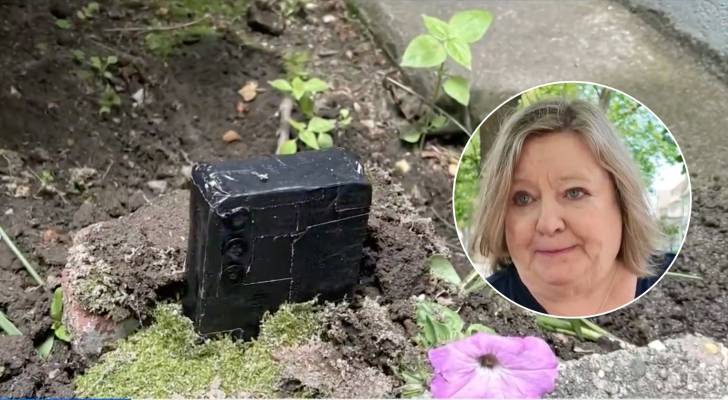‘Why us?’: A homeowner found a phone buried in her lawn — part of burglars’ chilling new surveillance ploy


A woman from Queens, NY, found what looked like a phone buried in her front lawn, but it wasn’t just lost property. Mary Kehoe, who’s lived in her Forest Hills home for 35 years, spotted the strange device outside. It looked like an Android phone wrapped in black tape, with only the camera exposed — […]
‘Please take me to small-claims court’: This St. Louis man’s credit score plunged from 815 to 630 after his landlord sent a $4,500 rent dispute to collections — here’s how he fought back


When St. Louis resident David Murray moved out of his apartment two months early, he thought he had done everything right — giving proper notice and settling his lease. Then came the shock: a $4,500 bill for two months’ rent plus penalties. Murray was sure it had to be a mistake, but when his pristine […]
‘Please do not go to the airport’: Florida-based regional airline Sliver Airways abruptly shuts down after filing for bankruptcy, leaving travelers stranded — what to do if you’re affected


There’s missing a flight, and then there’s missing every flight because your airline just went bankrupt. That’s what happened to hundreds of travelers this week when Silver Airways, a Florida-based regional carrier, abruptly announced it was ceasing operations effective immediately. Don’t miss I’m 49 years old and have nothing saved for retirement — what should […]
This Atlanta Burger King employee worked a last-minute shift in graduation gown after high school ceremony — now he’s $87,000 richer. Here’s what the teen can teach you


While many high school graduates are celebrating the season with dinners, parties and well-deserved rest, one teen in metro Atlanta marked the milestone a little differently — trading his cap and gown for a shift at Burger King. Still wearing his graduation medals around his neck, 18-year-old Mykale Baker showed up to work at the […]
Vietnamese-American salon owners are suing California after having their lives ‘turned upside down overnight’ — here’s why some argue the state has shown ‘blatant discrimination’


A new federal lawsuit is targeting California’s labor rules, and the state’s Vietnamese-American nail technicians are at the center of the fight. Filed at the U.S. District Court for the Central District of California in Santa Ana, the lawsuit argues that a 2020 law, Assembly Bill 5, stripped nail technicians of their right to work […]
This finance personality freed herself from $300K in debt — by replacing her shame with strategy. Here’s how she helps others find purpose in their finances through ‘curiosity’
You might recognize her as @TheBudgetnista on TikTok, sharing money wisdom with warmth and wit. But Tiffany Aliche’s impact goes far beyond viral videos. Before the books, the interviews and the online following, she was on the ground teaching women, particularly women of color, how to navigate financial systems not built with them in mind. […]
‘It’s just a little backyard’: Neighbors say this Florida home appears to be running an unlicensed restaurant out back — complete with propane tanks, industrial fans and cocktail tables


It’s not exactly strange to hear noise coming from a neighbor’s home. Maybe they’re hosting a birthday party or firing up the grill for a family barbecue. That’s just part of suburban life. But what’s happening on Northwest First Court in Miami Gardens is something entirely different. Don’t miss I’m 49 years old and have […]
‘Why us?’: This NYC homeowner found a phone wrapped in duct tape buried in her lawn — and police say it’s part of a new tactic burglars are using to spy on potential victims


A Queens woman found what looked like a phone buried in her front lawn — but it wasn’t just lost property. Mary Kehoe, who’s lived in her Forest Hills home for 35 years, spotted the strange device outside. It looked like an Android phone wrapped in black tape, with only the camera exposed — like […]
The US housing market now has 500K more sellers than buyers — the most ever recorded, says Redfin. And that means some have to accept ‘the writing on the wall’ as far as home prices go


The tables are turning in the U.S. housing market, and this time, buyers are calling the shots. There are an estimated 1.9 million homes for sale across the country, but only about 1.5 million active homebuyers. That leaves a gap of nearly 500,000 — the largest on record, according to Redfin. Don’t miss I’m 49 […]
Drivers across the US are hitting a dead end trying to get compensation for the paint flaking off their cars ‘in sheets’ — this Florida driver says it’s happened to him with 3 different cars


Thousands of drivers across the country are discovering their car paint jobs are literally peeling away — and fixing it could cost them thousands out of pocket. For Ed Rinkowitz, a Florida Hyundai owner, the flaky paint job is a familiar and frustrating sight. Don’t miss I’m 49 years old and have nothing saved for […]
